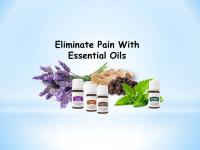January 4, 2018
Chronic pain is an unfortunate reality that many people have to deal with on a daily basis. It’s estimated that more than 100 million Americans are burdened by pain, and a good majority of them report that their pain severely impacts their quality of life.
A survey known as the Voices of the Chronic Pain found that, of people suffering from chronic pain, 60% experience “breakthrough” (i.e. very intense) pain every day, 77% feel depressed, 70% have difficulty concentrating, 74% have low energy levels, and 86% have difficulty sleeping.
And perhaps the saddest finding of all was that 51% of these people feel helpless to control their pain.
This data makes it abundantly clear that aches and pains are not just a minor inconvenience—not just “a part of growing older”—but rather a significant problem that deeply affects the lives of those suffering from it.
If you or a loved one can relate to these statistics, know this: You don’t have to feel helpless. There are plenty of steps you can take to alleviate your pain, quickly, safely, and naturally.
The problem with conventional solutions
It’s no wonder that people feel like they have no way to deal with their aches and pains, as the available solutions are dismal at best. Most people turn to non-steroidal anti-inflammatory drugs (NSAID’s) like ibuprofen, which carry all sorts of issues.
Studies have clearly demonstrated the risk of serious gastrointestinal complications that come along with ibuprofen usage, and data suggests that other types of NSAID’s (like acetaminophen, i.e. Tylenol) are even more damaging.
The worst part is that these toxic substances are not even that great at relieving pain!
They do nothing to heal the underlying factors that cause pain in the first place, so finding relief for more than a few hours requires continual redosing (which is why the risk of side effects is so great).
And don’t think that prescription painkillers are any better—tens of thousands of people die every year from overdosing on opioid and steroid painkillers.
Nature has provided us with perfectly suited solutions for pain—remedies that not only relieve pain, but also work to heal the underlying inflammation that causes it…
Luckily, Nature has provided us with perfectly suited solutions for pain—remedies that not only relieve pain, but also work to heal the underlying inflammation that causes it…and they do so without side effects.
One such solution comes in the form of essential oils.
Getting to the “essence” of pain relief
We’ve written about the wonderful world of essential oils in other articles. Clary sage, myrrh, and clove can be used as an effective cancer treatment, lemon essential oil can clear and cleanse both your body and your home…and the list goes on.
Essential oils are distillations of the most healing components of plants
They’re an ideal way to tap into all the sophistication and intelligence of plants (a level of healing that modern medicine is still try to match). And because Nature boasts a giant array of healing plants, there’s almost no end to the healing that these oils can provide.
Inflammation control and pain relief is no exception. Here’s a primer on a few of the most powerful essential oils that you can safely use for pain relief.
1. Lavender is one of the most popular and widely used essential oils, and for good reason. It relieves pain on multiple levels by reducing inflammation, calming the endocrine system (stress is a major factor for both inflammation and the pain that results from it), and improving blood circulation. A bit of lavender essential oil rubbed on the temples or under the nostrils also works wonders for headaches.
2. Black pepper essential oil is an extremely potent medicine. Through mechanisms similar to those of lavender, it quickly takes care of aches and pain when rubbed onto muscles and sore areas (mixing it with coconut or jojoba oil can make applying it easier). When taken orally, it also dramatically increases the absorbability of turmeric (another fantastic natural pain reliever).
3. Peppermint oil is especially healing for headaches and migraines, and is a great oil to mix with lavender when you need fast, powerful pain relief. Just 4 drops of peppermint essential oil, mixed with coconut or jojoba oil and rubbed on the temples, will do the trick. Studies have also shown that peppermint possesses a huge variety of other benefits too, including increased physical performance, digestive support, and immune support against a wide array of pathogens.
4. Ginger is one of the world’s most powerful natural anti-inflammatories, so it’s no surprise that the essential oil is packed with healing compounds. Studies have conclusively demonstrated this plant’s unparalleled ability to ward off arthritis and chronic pain; participants of one study even reduced pain and stiffness in their knee joints by 40% almost immediately.
Getting started
When acquiring essential oils, always make sure to choose the high-quality, “human-grade” variety; doing so will ensure that you maximize the benefits of these incredible natural medicines.
All of the oils discussed above are safe for internal use (which is generally considered the most potent route of administration); if using them in this way, though, eat something beforehand, and pay close attention to how your body responds (these are extremely potent medicines, and should be taken with care).
So the next time your day is interrupted by aches and pain, give them a try (and give your stomach a break from the toxic side effects of NSAID’s and other painkillers). You’ll be amazed by the powerful relief they’re able to offer, and you’ll be weening yourself off the poisonous products upon which Big Pharma has made us dependent.
naturalmentor.com

